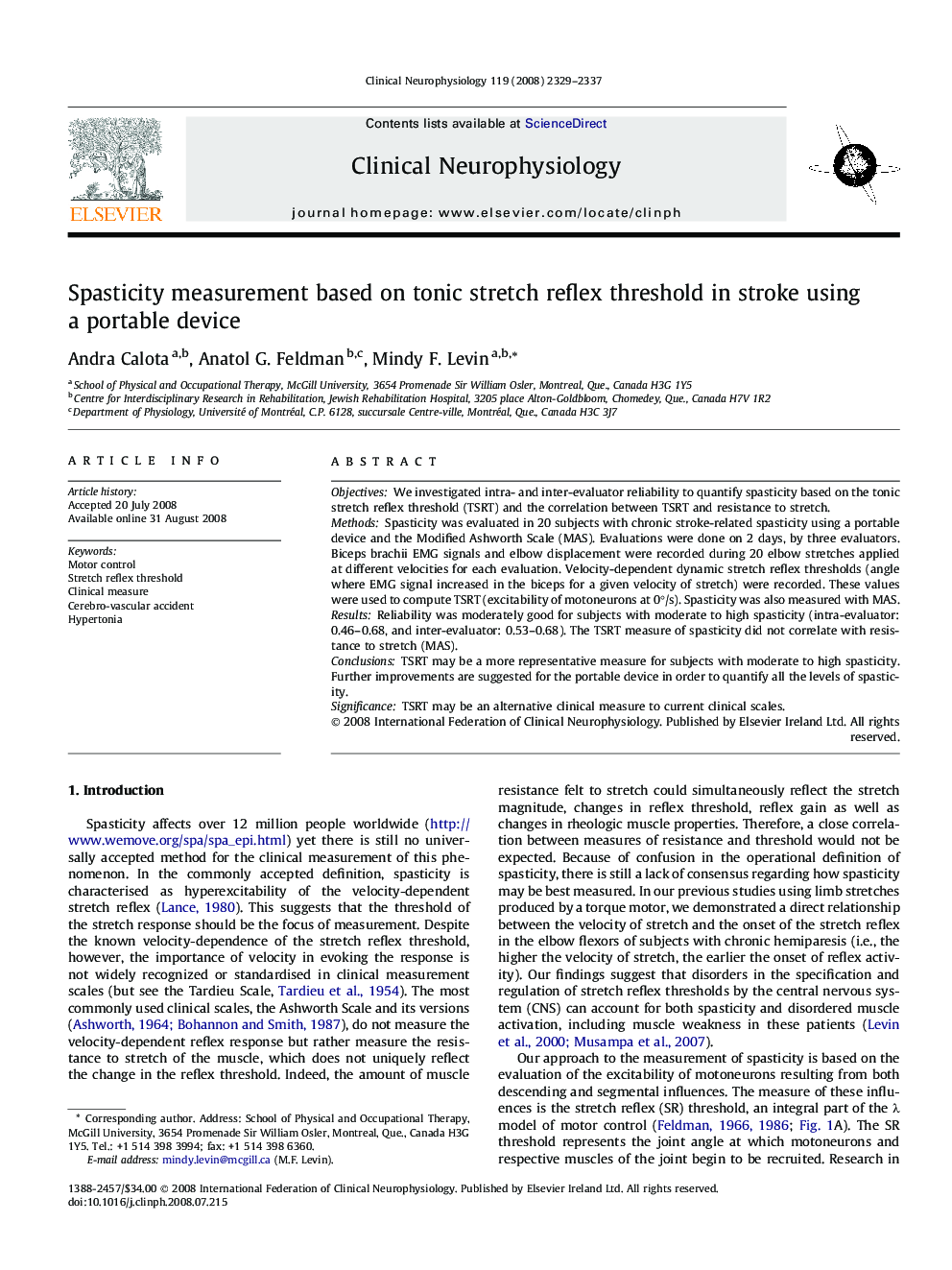| Article ID | Journal | Published Year | Pages | File Type |
|---|---|---|---|---|
| 3046470 | Clinical Neurophysiology | 2008 | 9 Pages |
ObjectivesWe investigated intra- and inter-evaluator reliability to quantify spasticity based on the tonic stretch reflex threshold (TSRT) and the correlation between TSRT and resistance to stretch.MethodsSpasticity was evaluated in 20 subjects with chronic stroke-related spasticity using a portable device and the Modified Ashworth Scale (MAS). Evaluations were done on 2 days, by three evaluators. Biceps brachii EMG signals and elbow displacement were recorded during 20 elbow stretches applied at different velocities for each evaluation. Velocity-dependent dynamic stretch reflex thresholds (angle where EMG signal increased in the biceps for a given velocity of stretch) were recorded. These values were used to compute TSRT (excitability of motoneurons at 0°/s). Spasticity was also measured with MAS.ResultsReliability was moderately good for subjects with moderate to high spasticity (intra-evaluator: 0.46–0.68, and inter-evaluator: 0.53–0.68). The TSRT measure of spasticity did not correlate with resistance to stretch (MAS).ConclusionsTSRT may be a more representative measure for subjects with moderate to high spasticity. Further improvements are suggested for the portable device in order to quantify all the levels of spasticity.SignificanceTSRT may be an alternative clinical measure to current clinical scales.
